A Tale of Two Buildings
An arena and park pavilion are each called “public-private projects.” But they offer quite different conceptions of the public interest.
Plans for two very different Milwaukee buildings were recently unveiled. A proposed sports arena will primarily cater to upscale patrons and will further enrich the Milwaukee Bucks’ mega-wealthy owners. Getting far less discussion is a cutting-edge visitor and education center in Lakeshore State Park that will offer free access to all. It will grace a peninsula tucked between Lake Michigan and Summerfest’s shores.
One will cost $500 million or more, and taxpayers are being pressured to contribute at least $250 million. The arena is being demanded by a single private business—an NBA team estimated by Forbes to be worth $600 million.
The other will cost $5 million. The nonprofit Friends of Lakeshore State Park says it will ask only private donors to pick up the tab, even though the pavilion will be a completely public space in a Wisconsin state park.
A “public authority” will manage and maintain the publicly-subsidized sports and entertainment district created for the arena. The arena’s lifespan likely will be no more than 30 years, as is now customary for NBA venues. As the building’s “owner,” the public may be expected to fund costly repairs and upgrades for the rapidly depreciating asset, as it has for Miller Park. (That part of the plan has yet to be discussed.) Sadly, that will repeat the history of public subsidies that shore up the BMO Harris Bradley Center ($10 million in state funds since 2009, plus $20 million in outstanding debt).
Tickets to Bucks games will be beyond the budget of most area residents. However, Bucks’ architects are calling a courtyard within the commercial entertainment complex a “public plaza.” Preliminary drawings make the space seem as “public” as any plein-air bar or restaurant.
The state-park oasis will be open year-round, welcoming strollers, joggers, cyclists, and anglers. Transient boaters who dock in the park’s slips will enjoy accommodations needed by campers. Educational programs will be conducted indoors and on a sheltered plaza that will seat up to 300. The building will also house an office for the park ranger and storage for maintenance.
Seeing basketball games and concerts in an arena offers high-energy entertainment — for those who can afford it. Others in southeastern Wisconsin who never get to attend a Bucks game may take pride in having an NBA team in the region, and perhaps get a thrill watching games on TV.
Milwaukee’s lakefront, including this 22-acre preserve, draws residents and tourists from far and wide. Many are proud that Wisconsin’s only urban state park is here. They relish its attributes, including a sweeping prairie, fishing areas and a watercraft-accessible beach. They like how it scenically links the Hank Aaron and Oak Leaf state trails.
There’s little that connects these two buildings except that each, in its own way, could enhance Milwaukee’s quality of life and the experience of visitors. Perhaps the starkest difference lies in their respective relationships to the public and private sectors.
The arena will mostly reward Bucks owners and players, while drawing heavily on public dollars for construction and upkeep. If it works as the Bradley Center does, other teams, as well as concert promoters, will lease the venue for their events. Meanwhile, the Bucks will pay no rent and gain a large portion of net revenue from luxury suites and concession, catering and merchandise sales. Apparently, that’s just how major-league deals are structured in our topsy-turvy world.
Current policy and budgeting means state funding for new park facilities is out of the question. Gov. Scott Walker’s proposed budget has even eliminated all funds for state parks (which calls into question their “public” appellation). In response to these penurious measures, public-spirited individuals and businesses have stepped up to raise funds for this ground-breaking center. The public park’s ultra-green building will be enjoyed as a destination or a random discovery.
Public funding for a new arena faces widespread opposition, according to a recent Marquette poll. In an era of decimated state and local budgets, subsidizing a pricey sports palace will be a heavy lift. But, somehow, taxpayers may end up carrying that burden.
By contrast, a private campaign to build a “light-on-the-land” park facility will produce a shared legacy, enjoyed for generations.
A new venue to produce revenue for the Bucks will cost taxpayers a pretty penny. An energy-generating visitor center won’t cost taxpayers a dime.
An arena will provide good times for relatively few. A park pavilion will foster the greater good for all.
Lakeshore State Park Visitor Center Renderings and Site Plans
Arena Renderings
Op-Ed
-
Unlocking Milwaukee’s Potential Through Smart Zoning Reform
 Jul 5th, 2024 by Ariam Kesete
Jul 5th, 2024 by Ariam Kesete
-
We Energies’ Natural Gas Plans Are A Mistake
 Jun 28th, 2024 by John Imes
Jun 28th, 2024 by John Imes
-
Milwaukee Needs New Kind of School Board
 Jun 26th, 2024 by Jordan Morales
Jun 26th, 2024 by Jordan Morales



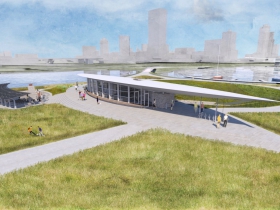
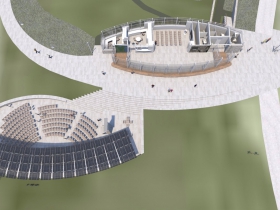
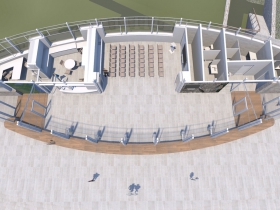
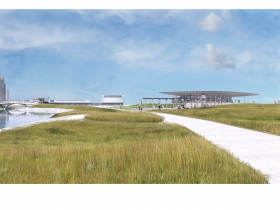
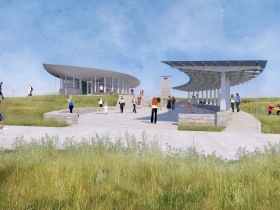
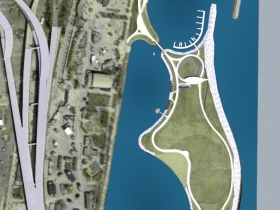
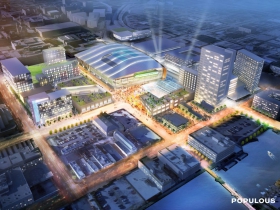
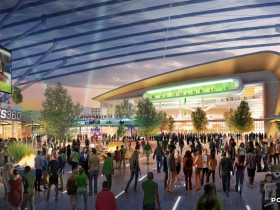
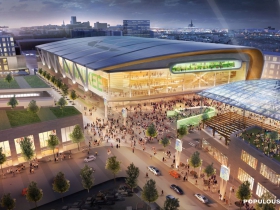



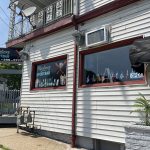














Class envy much? How do you come to the conclusion that the arena will cater to “upscale” patrons? That kind of divisive language does no one any good. The arena will be a community asset. Certainly most functions there will require a ticket to get in. So what? Does that mean having a job to pay for recreation such as games and concerts makes you upscale?
These will be two very different structures serving very different needs. They will both be wonderful for the entire region to enjoy. Isn’t that enough? By the way, among the purposes of the Lakefront Park building will be to provide 24 hour bathrooms for boaters. Boaters! Now you’re talking rich people.
Does everything here have to be political? Can’t we all just get along?
@mbradleyc
Have you been to many Bucks games? This year, one could get fairly affordable tickets simply because the Bucks literally have to beg people to come to games.
The new arena is needed by the Bucks because the current one does not generate enough revenue. There is not enough club seating. There are not enough high end amenities. The new arena will be smaller than the current one, so the nosebleeds behind the basket that the average person can afford will be fewer.
It’s a private business and I’m just not sure why it needs a taxpayer subsidy. The vast majority of us running businesses don’t get one.
What a load of baloney. That park is fantastic as is, and already offers unrestricted public access without a visitor’s center.
Do you what’s more sustainable than “one of the most sustainable buildings in the world?” Not constructing a building at all, and letting that open space and beautiful setting breathe.
@mbradlyc
Couldn’t have said it better myself. They are both fine budings, serving comoletely different purposes. Why the negativity? Who cares if it benefits the owners. That’s not really our concern. The question is: will it benefit the public?
The arena project as a whole may transform downtown. If true, that’s worth some public money.
Both buildings, and their purposes, seem worthy. But how can legislators eliminate all funding for state parks, and then advocate for $200 M for one arena?
Parks and rec also drive tourism and improve quality of life. There’s no way individuals can replace government funding for parks. We’re lucky some folks want to try.
“… The other will cost $5 million. The nonprofit Friends of Lakeshore State Park says it will ask only private donors to pick up the tab…”
This feels like a “vanity project” for the FLSP, or frankly, a thinly veiled marina project. So go build it if you’re just promoting an idea. But $5M?
There’s a cheaper, better collaborative opportunity in partnering with the nearby, adjacent Festival grounds, even including using the existing northern most stage.
You still spend $5M but add additional slips with an extended project to include year-round public access to that wonderful promenade along the east side of that lagoon. That open pedestrian loop with Lake Shore State Park was absolutely beautiful last fall (although I haven’t seen it open so far this spring). You could even turn it into a romantische “Unter Der Linden” Way.
I like how the visitors center will have no upkeep. Amazing that all this cutting edge technology and environmentally friendly infrastructure will not ever need to be replaced and will last for an eternity.
In reality, these are both great projects that will benefit the community. One is far larger and will have a much bigger impact, but I’m glad they’re both being done.
A ridiculous comparison. This sounds like the many old, stodgy, visionless, fixed mindset Milwaukeans who want Milwaukee to stay in the 1950’s.
Bathrooms and showers for boaters and cheesy wedding receptions. My peaceful walks with my dog will now be interrupted by Proud Mary and The Electric Slide. Great.
M…. absent the arena, legislatures will still cut park funding. Again, its a false choice.
@David You’ll be more likely to run into more school children learning about the wildlife on the park, fresh water, and so on.
2000 sq ft would be an awfully small space for a wedding reception…
It was just a joke, but I promise you….. there will be weddings. All joking aside, I think its a great project.
David, you’re probably right about zero funding for state parks regardless of arena (though budget not yet final).
Walker has also proposed naming rights for state parks (& DNR chair supports it). We’re in a whole new world. The possibilities are endless. But if parks will have to subsist strictly on earned income, we may see more than weddings in them.
The comparison with state parks ends when you consider that state parks don’t have the leverage to go to another state to do their business. That’s called the free market at work.
Parks of any type are place-based public amenities, not businesses. But major-league franchises have more advantages than others in the “free market,” since they are protected by a cartel/monopoly.
Gary, I’ve not seen Berlin’s “Unter Der Linden” but found photos and info online. Nice inspiration. Some have suggested that Summerfest’s grounds could be used more off-season and possibly become a year-round public space/destination. Perhaps something to pitch to the city, and LSP folks.
Thanks Virginia. I get the comparison and appreciate your message, a lot. So we have the public funding a private project and private people funding a public project. And I am sure We-Energies will charge the Pavilion for the solar generated electricity that will be pumped back into the grid.